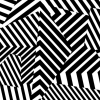Ways to avoid explosions when using dForce?
 Dazzle
Posts: 45
Dazzle
Posts: 45
I've been experimenting with dForce lately, but 90% of my tests ended in failure when objects exploded, usually very quickly. Only one test could be countered as a success. Another passed through an acceptable state before exploding (I believe there is a way to rollback to the intermediate state - I just have to rediscover the video that explained how).
Anyway, my questions are these...
1) do certain objects always explode, or does it depend on other factors?
2) to avoid wasting time on fruitless endevours, is there a way to identify (in advance) objects that are going to explode, either by inspection, or some quick test, or by applying certain criteria, or by using a tool to analyse the object?
3) if problematic objects can be identified in advance, can they be fixed? For example, would simplifying (e.g., decimating) a complex object help to reduce the chances of an explosion? Would closing openings with transparent surfaces be useful?


Comments
Moved to Daz Studio Discussion Forum
My guess is that you have to make sure it is not touching the figure, or at least it doesn't have extreme poke-through issues, the best way to find this out is to turn off smoothing altogether, because the exploded dForce item is stuck inside the character model so that's why it explodes, at least that's the case when my clothing/hair ended up exploding!
EDIT: Oh yeah, also multi-parts on the clothing item will also make it explode!
Objects and parts of objects intersecting.
An object or part passing through the simulated item during the sim.
A need to reduce the collision distance (default is 0.2 or something like that) halve it.
Like the others have said, I'ld also suggest if your doing multiple clothing and/or hair with dforce to do them one at a time. Hide all the other dforce items except one and simulate that. Once done hide it and unhide the other and simulate again. Of course don't hit "clear" or it will reset the previous simulations. Also if you have any fiber hairs on the body turn those off or set to ignore simulation.
Decimating may actually make it more problematic and prone to exploding.
And if that still doesn't work go into surface and turn self collision off.
Two factors come into play here. And this is the same for any cloth engine, not just dforce.
1. Initial state of the simulation. As others say you must be sure that the initial state of the simulation is "physically plausible". That is, no surface intersections (real materials don't cross the atomic barrier), and a mesh dense enough to simulate the foldings (real materials get more or less "bendy" depending on the surface structure). So for example silk will need a more dense mesh than leather.
2. Simulation precision. Again the simulation must be "physically plausible". It is unlikey that a hand will impact a cloth at 300 km/h for example. Nevertheless I've seen simulations setup from people where a figure moves from rest pose to final pose in one second or less, then they wonder why the simulation explodes. Either give the figure more time to get to the final pose, as it would be in a real case, or increase the simulation precision so the cloth engine can handle a very high speed. But with a non-realistic speed you will get a non-realistic simulation anyway. Still need to avoid intersections of course, so for example a leg can't cross a chair in the simulation process.
Guys, thank you so much for your replies - my success rate has improved dramatically! More by luck than judgement, I managed to avoid some of the pitfalls you listed, but others I was unaware of (e.g., multipart objects and the adverse consequences of decimation). My results are much better now I know what (not) to do.
I assume this is an explosion? :-)
The G8M on the right is wearing the exact same outfit as the G8M on the left! The poke-through only seems to show up during simulation. The starting/stock pose seems to have the outfit properly covering the G8M. I'll try the 1-by-1 simulation.